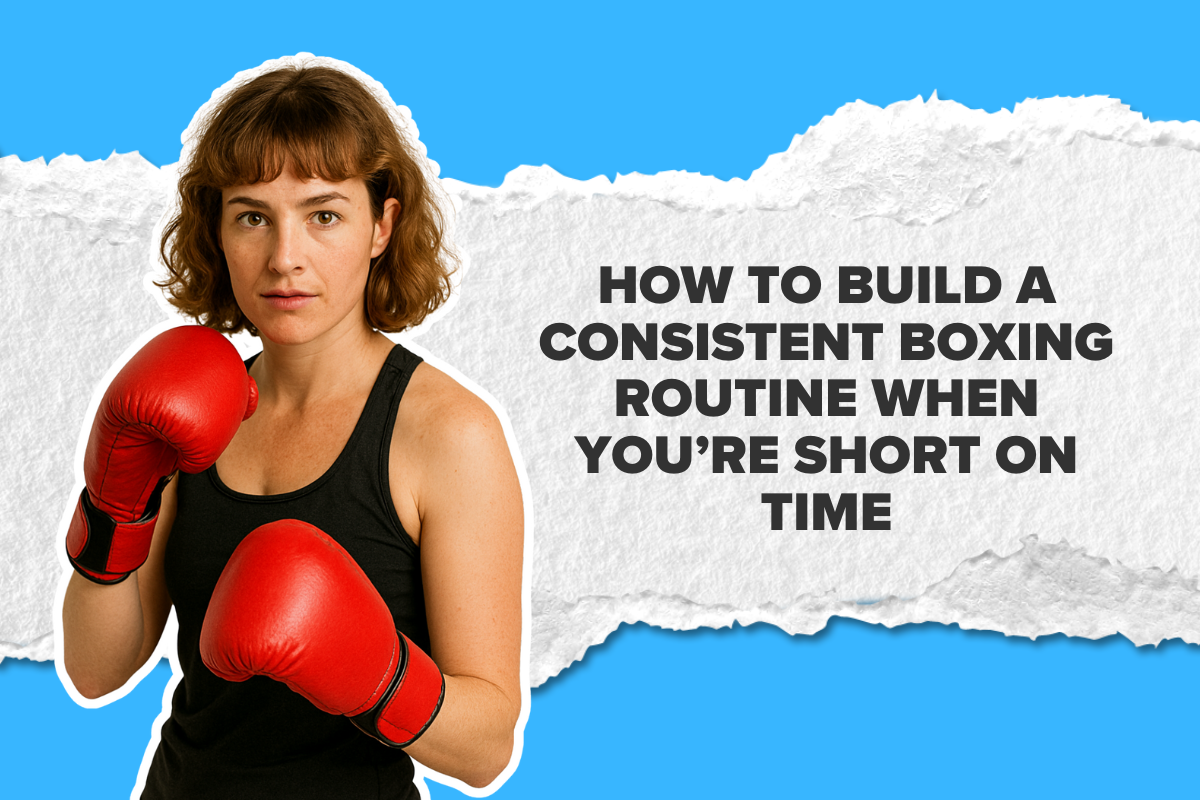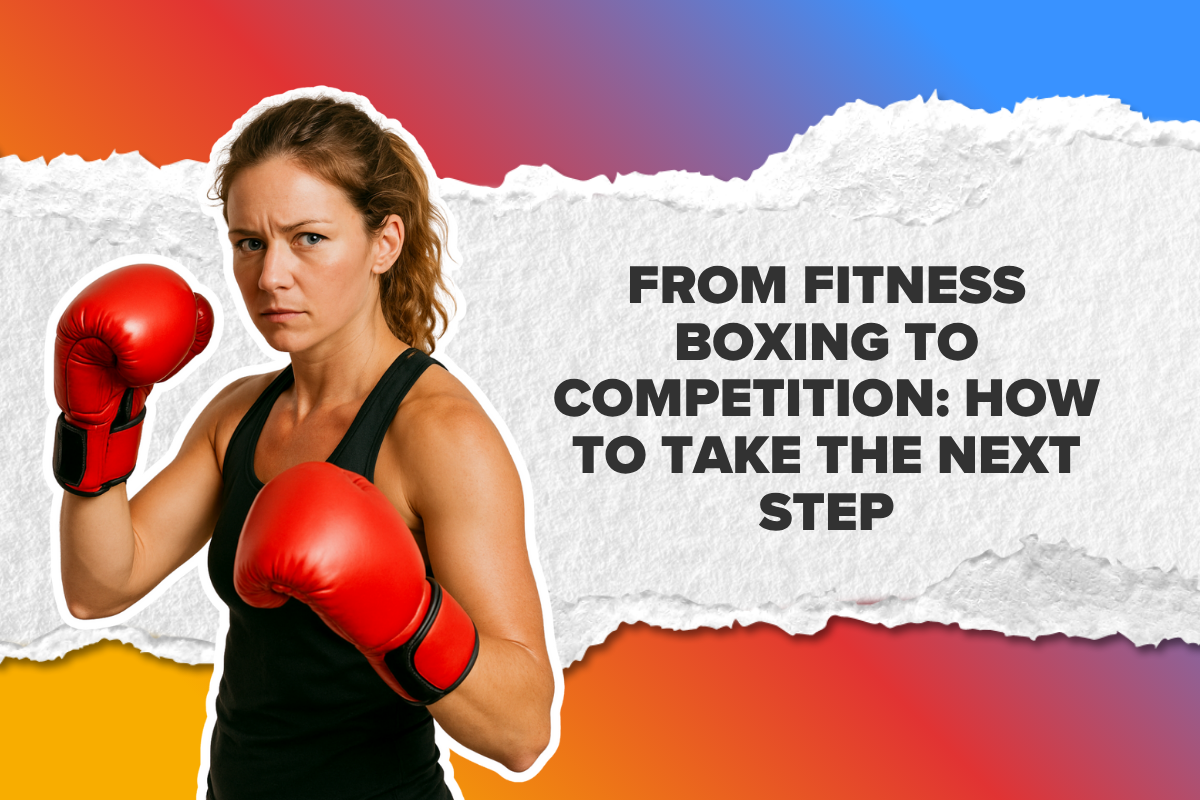When you think of a powerful punch, it’s easy to picture raw strength — a big upper body and bulging arms driving the glove forward. But that’s not how it really works.
In boxing, power doesn’t come from the arms — it comes from the entire body.
A great punch is the result of perfect coordination between the legs, hips, core, shoulders, and arms — all working together in one explosive chain of movement.
Let’s break down the science behind a punch and discover which muscles women should train to deliver real, technical power — no matter your size or frame.
The Biomechanics of a Punch
A powerful punch isn’t just a motion — it’s a sequence. It starts from the ground and travels upward through your body in what’s called the kinetic chain.
Here’s how it works:
-
Legs and feet generate the initial drive from the ground.
-
Hips and glutes rotate to transfer force upward.
-
Core muscles stabilise and connect the lower and upper body.
-
Shoulders and chest accelerate the arm forward.
-
Arms and fists deliver the impact — the final link in the chain.
Each link amplifies the energy from the one before it. So, if any part of the chain is weak, your punch loses power — even if you’re strong elsewhere.
1. The Legs: Your Hidden Power Source
The most overlooked muscle group in punching is your legs. Power starts from the ground — your feet push against the floor, and your legs drive the movement.
Key muscles:
-
Quadriceps: extend the knees for stability and drive
-
Hamstrings: control hip extension during rotation
-
Glutes: the biggest muscle in the body — a major source of punching force
-
Calves: help with balance and explosive movement
Best exercises:
-
Squats and jump squats
-
Lunges and step-ups
-
Deadlifts (traditional or Romanian)
-
Resistance-band lateral walks
-
Box jumps
Tip: Think of every punch as a mini “leg press.” If your legs are strong, your punches will be, too.
2. The Hips and Glutes: Where Rotation Happens
The hips and glutes are the engine of a boxer’s rotation — the twist that turns your body into a torque machine.
When you pivot on your back foot and rotate your hips, you unleash the energy your legs built up and send it through your torso.
Key muscles:
-
Gluteus maximus: drives rotation and stability
-
Hip flexors: help with movement speed and balance
-
Adductors and abductors: control direction and keep your stance solid
Best exercises:
-
Medicine ball rotational throws
-
Hip thrusts
-
Kettlebell swings
-
Cable woodchoppers
-
Rotational squats
Tip: When you throw a punch, your hip rotation should lead the movement — not your shoulder. That’s how you build torque.
3. The Core: The Connector Between Upper and Lower Body
The core is where power travels through. A strong, stable core ensures that none of the energy generated by your legs and hips gets “lost” on the way to your fist.
Key muscles:
-
Obliques: drive twisting motion
-
Transverse abdominis: stabilises your spine
-
Rectus abdominis (abs): supports posture and tension
-
Lower back muscles: keep your body upright and balanced
Best exercises:
-
Planks and side planks
-
Russian twists (with or without a medicine ball)
-
Hanging leg raises
-
Cable rotations
-
Ab rollouts
Tip: Train your core for stability and rotation, not just aesthetics. A visible six-pack doesn’t mean functional strength.
4. The Shoulders: The Speed and Snap
Your shoulders (deltoids) don’t generate the initial power, but they control the delivery of your punch — especially speed, accuracy, and endurance.
Key muscles:
-
Anterior deltoid: initiates the forward punch motion
-
Lateral deltoid: helps lift and control arm movement
-
Posterior deltoid: stabilises during recoil
Best exercises:
-
Shadowboxing with light weights
-
Dumbbell front and lateral raises
-
Battle ropes
-
Push-ups and shoulder taps
-
Resistance-band punches
Tip: Women naturally have great shoulder endurance — use that advantage to throw faster, sharper combinations.
5. The Chest and Arms: The Final Push
The chest, triceps, and forearms provide the final acceleration and stability in the punch. These muscles don’t create power on their own, but they make sure the energy from your body reaches the target effectively.
Key muscles:
-
Pectorals: help drive the arm forward
-
Triceps: extend the elbow and add snap at the end of the punch
-
Forearms and wrists: stabilise your hand and support impact
Best exercises:
-
Bench press or push-ups
-
Triceps dips or close-grip push-ups
-
Cable presses
-
Wrist curls and grip strength drills
Tip: Focus on power endurance — the ability to throw strong punches over multiple rounds, not just one.
6. The Back: The Stabilizer You Didn’t Know You Needed
A strong back improves posture, punching alignment, and shoulder stability. It also helps control recoil — the moment your punch snaps back to guard.
Key muscles:
-
Latissimus dorsi (lats): control retraction and help “snap” punches back
-
Trapezius: stabilises the neck and shoulders
-
Rhomboids: keep your scapula retracted and prevent shoulder injury
Best exercises:
-
Rows (barbell, dumbbell, or banded)
-
Pull-ups or assisted pull-ups
-
Face pulls
-
Reverse flys
-
Deadlifts
Tip: A strong back balances all the forward motion in boxing — preventing overuse injuries and keeping your punches crisp.
The Science of Power for Women
Here’s what makes boxing training especially effective for women:
-
Women often have greater endurance and flexibility, making it easier to maintain form under fatigue.
-
With proper resistance training, women can improve neuromuscular coordination — the ability to recruit multiple muscle groups quickly and efficiently.
-
Punching power increases dramatically when women strengthen their posterior chain (glutes, hamstrings, back).
It’s not about bulking up — it’s about training smarter, not heavier.
7. Train for Explosiveness, Not Just Strength
Power = Force × Speed
That means you need to train for explosive power, not just static strength. Add these to your weekly sessions:
-
Plyometric push-ups
-
Medicine ball slams
-
Jump squats
-
Rotational throws
-
Resistance-band shadowboxing
You’ll teach your muscles to fire faster and generate more force — the true secret to knockout punches.
Final Thoughts
A powerful punch isn’t about size or brute force — it’s about technique, timing, and the strength of your entire kinetic chain. When women focus on building strong legs, hips, and cores — and learn to move that strength through rotation — they can hit harder than they ever imagined.
It’s proof that real power starts from within — and travels through every muscle you train.
And when you’re ready to put that power to the test, train with KO Studio, a women’s boxing gear company made for fighters who believe strength is skill — and power has no size limit.



